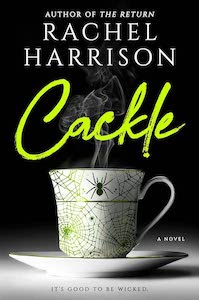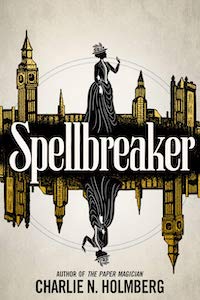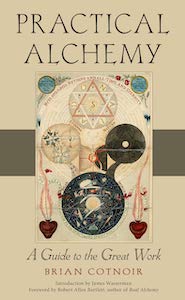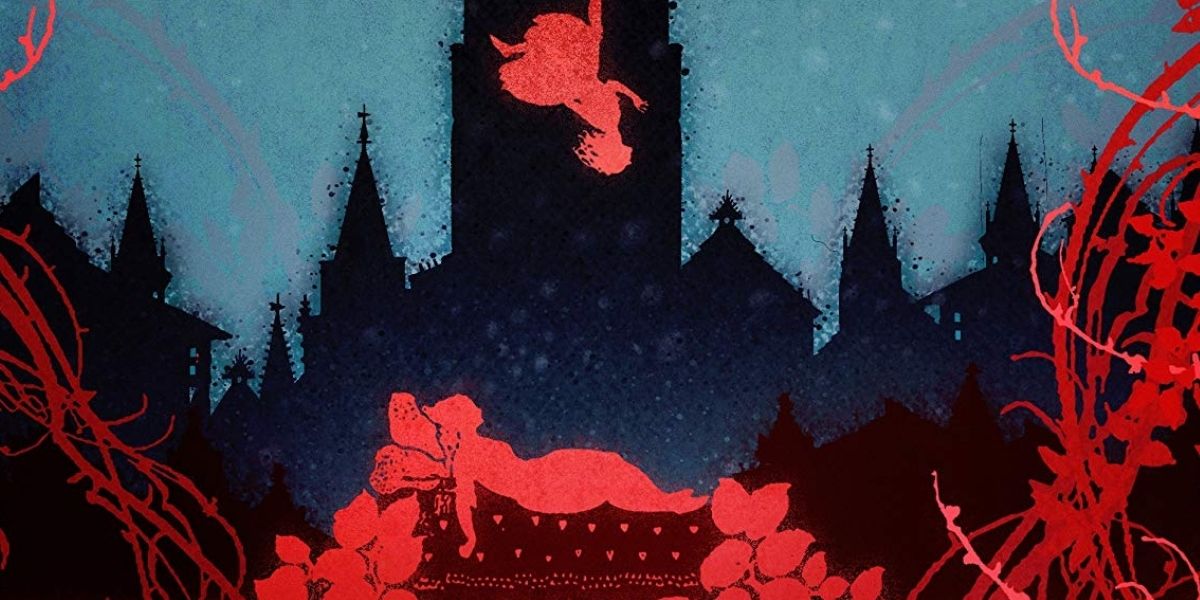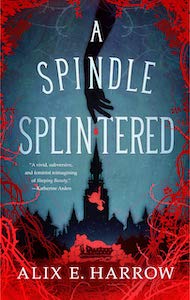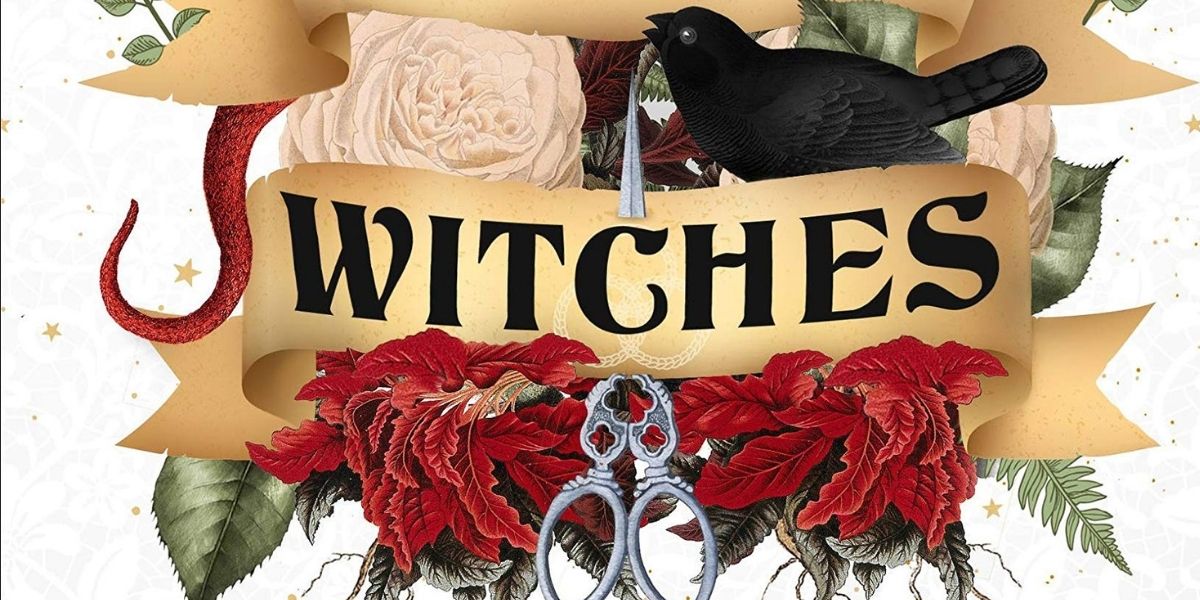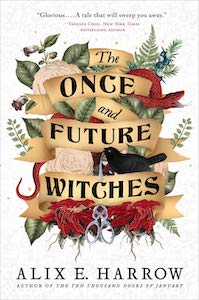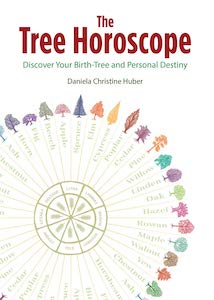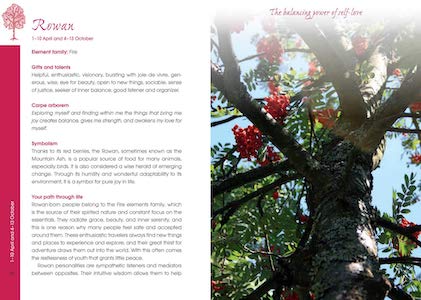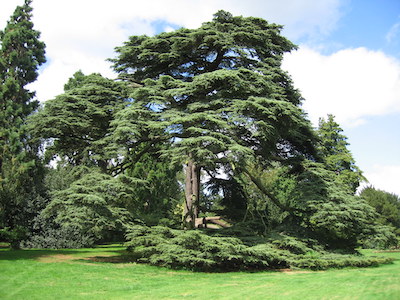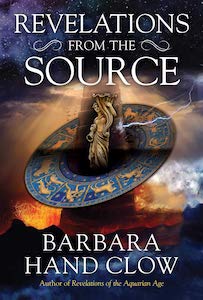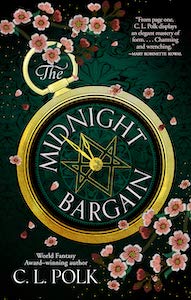
The Midnight Bargain, by C.L Polk
Erewhon, 1645660079, 384 pages, October 2020
Female sorceresses doing all they can to escape the confines of marriage? Um, what kind of fantastically wonderful story did I get myself into the past few days? The Midnight Bargain by C.L. Polk! And I certainly enjoyed this exotically fanciful tale.
The story takes place in Chasand, which sort of reminded me of a magical India. It is time for Beatrice to make her way through bargaining season, but she’s set on locating a grimoire that will teach her how to bind with a greater spirit. She’s convinced that if she can do this, her father will allow her to use her influence as a mage to restore the family fortune rather than get married.
Why is marriage such an appalling future for Beatrice? Because Chasand custom forces married women to wear a collar that strips them of their magic in order to ensure they do not conceive a spirit born baby. The mages of this world know spirits are eager to enter the material world, and when this happens it’s pandemonium; the hungry, greedy spirit stops at nothing to satiate their endless desire, often even killing those who stand in their way. The only solution thus far is to prevent women from accessing magic — a solution suitable for male socreers, but absolutely appalling for the girls with innate magical abilities.
Turns out Beatrice isn’t the only one seeking an alliance with a spirit to escape the imprisonment of a husband. Ysbeta, who is the beautiful daughter of one of the region’s wealthiest families, also has her sights set on the grimoire. Beatrice concedes the book to Ysbeta, but Ysbeta does not know the secret code needed to read it. Thus, their friendship forms on the promise that Ysbeta will allow Beatrice to copy the pages of the grimoire in exchange for sharing with her what the book says and teaching her the skills needed to complete the ritual.
Meanwhile, Ysbeta’s brother, Ianthe, one of the most desirable suitors of bargaining season, is increasingly intrigued by Beatrice. When a spirit Beatrice is letting inhabit her body begs her to kiss Ianthe, the sparks between them ignite immediately. Ianthe is kind and open-minded. He empathizes with the situation of Beatrice, who openly speaks her mind on the injustice of women’s lot in society, and is determined to help her the best he can.
Beatrice has a lot to balance in her life. The pursuit of her goal to bind with a greater spirit while still going through the motions of bargaining season adds to the need to handle situations with delicacy and care. Most of all, she has her family to consider; their reputation, their fortune, and their future rest upon her finding a wealthy husband immediately. Much of the plot reminds of a Bridgerton, where competition is fierce and stakes are high, but with sorcerers and mages as eligible bachelors and bachelorettes.
This is one of those reads where you know the author has some background occult knowledge and isn’t just capitalizing on the popularity of magic-themed fiction. The description of the rituals and the spirits is unique, but also very detailed and similar to how it would be done in real life. Polk describes the importance of breath, hand signs, and visualization. I also really liked the mediumship aspect of the characters hosting lesser spirits in their body.
I grew really attached to Beatrice’s lesser spirit, Nadia, who was really funny and cute. It was very interesting to read about how Beatrice cast her circle for protection and bargained with Nadia. Nadia is a lesser spirit of good fortune, so in exchange for the luck she brings, Beatrice would lay out very clear terms of their bargain. For instance, Nadia’s luck for three cups of punch, star gazing, and a kiss until midnight. I think anyone who’s done this type of spirit work, which unfortunately always seem to be men rather than women even in real life, would find the writing very accurate.
Plus, it’s really kick ass to read about women choosing a life of magic and independence over the confines of marriage, even if it’s completely taboo to do. I can’t even imagine how horrible it would be to live in a society that would take away my magical ability, forcing me to be nothing more than a dedicated wife and mother. There’s definitely a theme of fighting for women’s rights, but I enjoyed how Polk didn’t set men against women. The book showed that men can be a huge support for women and part of a greater change.
All in all, The Midnight Bargain was a really wonderful read that I highly recommend, especially for women who are interested in summoning and working with spirits! This is one of the only books I’ve ever read with a main character that is a woman using this type of magic. I’m all for finding fictional role models, so if you’re considering pursuing a summoning ritual, this would be an entertaining book to read.
Even if you have no interest in this type of magic yourself, it’s still a fun book. There’s a lot of focus on the pomp and circumstance of bargaining seasons, adding the flair for romance and drama within the greater story of women’s right to choose their own path. It has made my soul very happy and fulfilled the next few days, so much so that I haven’t even raced onto another book because I’m still savoring this story!
Alanna Kali is an astrologer, numerologist, and pioneer spirit that loves to explore life through the lens of depth psychology. She has a passion for studying the humanities and social trends. Her academic work is centered upon reuniting body, mind, and spirit through eco-psychology. She loves reading, spending time in nature, and travel.


